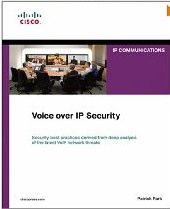Are you interesting in writing about VoIP security? In providing updates on security news? Product reviews? Threat analyses? Notes about recent security advisories?
Would you like your writing to appear on this blog?
As you have probably noticed, the frequency of our posting here in recent months has dropped a bit. It’s definitely not for lack of content… anyone subscribing to a Google Alert on “voip security” or subscribing to the VOIPSEC mailing list will know that there are definitely ongoing VoIP security issues. But we collectively haven’t been writing all that often about those issues here on this blog. Many reasons… but mostly that those of us who have been writing for the three years since we started this blog have just been finding ourselves insanely busy and not able to make the time to write here frequently. A couple of folks have moved into roles where they no longer work directly with VoIP security. Others have started their own blogs or just gone on to other things.
So we are looking to recharge the “Voice of VOIPSA” writing corps a bit. Our goal all along has been to make this site a portal for news and analysis about “VoIP security” in whatever form that may take. We are looking for people who might be willing to write short notes about news stories related to security of VoIP, Unified Communications, etc. We are also looking for people interested in writing longer pieces like some of the deep analyses we have posted here in the past.
VOIPSA’s overall mission is to raise the level of discussion about communication security issues in the IP space – and we’re looking for anyone who would like to help us in doing that through this blog.
The only major requirement we have for writers here is that any pieces must be vendor-neutral, i.e. we are not looking for people to write here about how their company’s product will solve all your security woes. We’re not a marketing site for either VoIP or security vendors. However, we do welcome posts from people at those companies that talk about the general state of the industry. We also welcome posts from folks who may not be at any company in the space but are just passionately interested in the topic.
If you are interested in writing for Voice of VOIPSA, please send me an email expressing your interest and providing some background about your connection to VoIP security. If you write at an existing weblog, even on a completely different topic, it would be helpful if you sent along that link as well.
Thanks for continuing to follow this site and after three years of blogging, we’re looking forward to continuing to provide you information and analysis about VoIP/communication security for the next three years… and beyond!
Technorati Tags:
voipsa, voip, voip security, voipsecurity, security, blogging


 It appears that there is a new book out on VoIP security named, rather simply, “
It appears that there is a new book out on VoIP security named, rather simply, “